Not the best driver’s cars, nor the best value for money, just five cars we love
Alpine, Porsche, McLaren, BMW and Ford go head-to-head to find the best car available in the UK right now
Can these really be the five best cars on sale in this country? Almost certainly not, for that is not what we set out to find. They are not the greatest driver’s cars, nor the ones that most exceed expectations, or come from that curious confection where cars appear to be without reason somehow greater than the sum of their constituent parts. There’s only one superlative that applies to this group: they’re simply the cars we like best.
Which is how you get to see a Ford Fiesta and McLaren 600LT sharing space on the same page. How a four-door diesel saloon comes to duke it out with a mid-engined two-seat coupé, and how the presence of the perennially most versatile sports car of them all comes to brood over them.
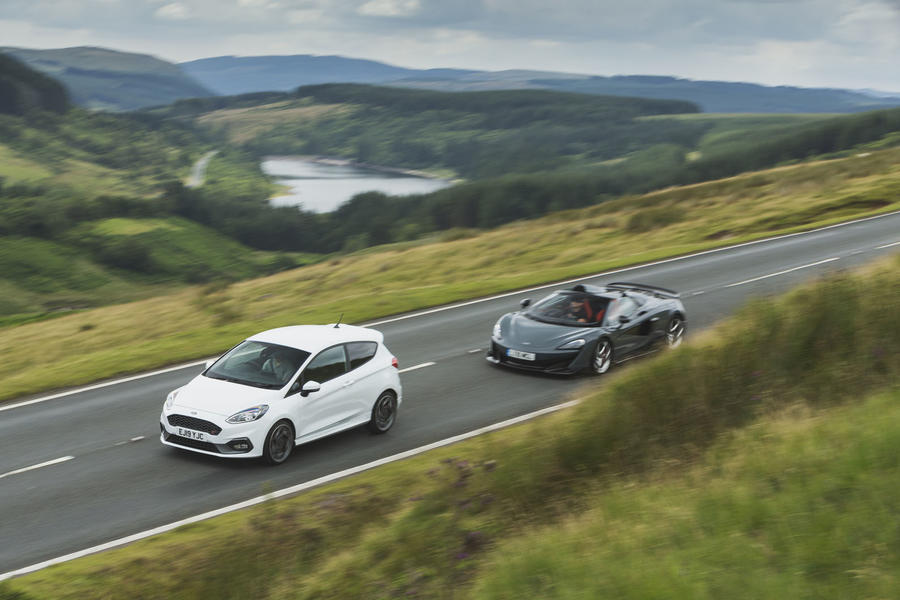
That all qualify as ‘fun to drive’ should surprise few reading this magazine. There are plenty of cars we really admire that got nowhere near even the top 50, let alone this top five, because driving entertainment didn’t make their ‘to do’ list. For us, enthusiasts to our toenails, to go top five you have to go top fun, too.
Take the Fiesta. Yes, we’ve chosen an ST and it’s here in its own right, but also to represent all Fiestas. Last year, Ford sold 50% more Fiestas in the UK than the next best-selling car, a fact that makes us very happy. And, of course, that’s because the car is attractive and affordable to run and the deals are good, but the repeat business must in some part come from the fun it provides. I know a district nurse who has just given up a rival car for a 1.0-litre Fiesta and is utterly smitten. She knows nothing and cares less about cars but insists “I just really like the way it drives”. And that is enough for Ford to know it has done its job well.
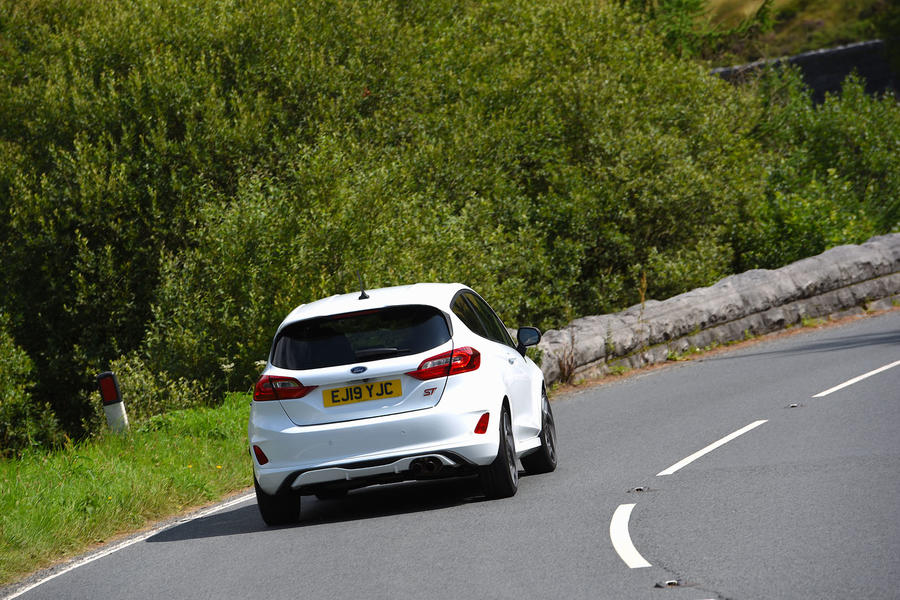
Haring across Wales in the ST and seeing how easily it keeps up with the pokier members of our happy band is instructive, not to mention highly entertaining. If you did the same journey back in 1981 in the first fast Fiesta, the original XR2, you’d see that in character, if very little else, not much has changed. There’s an infectious cheerfulness about this car, a willingness to be wrung out, hurled, flung and booted from place to place.
More than any other here, it’s a car you drive on its throttle pedal because none is more inclined to adjust its attitude according to its opening. And, to us, that’s pretty much the definition of fun. Get the car into the corner by keeping off the gas, let the back go loose if that’s what it wants to do, because the moment you’re at the apex and on the power, it all falls beautifully back in line and you rocket away, grinning like a loon.
And that’s pretty much the reason the BMW 320d has come from nowhere to make the top five of this list. When we performed this exercise last year and despite excluding all cars costing more than £50k, its predecessor didn’t even make the top 10.

There’s plenty I’d choose to criticise about the 320d: on sport suspension, the ride quality sits on the challenging side of comfortable, the engine no longer has that bizarre willingness to rev of previous four-cylinder BMW diesels (blame WLTP, I suspect), and if I was going to be convinced by BMW’s curious new instrument layout, it would have happened by now.
But all that is overshadowed, especially in a feature such as this, by the one thing it has gained. Or, I should say, regained. Being old enough to remember successive generations of early 3 Series, their position as weapon au choix among those in need of a compact saloon but who liked to drive was nothing less than inviolable. Okay, I’m not so ancient as to have been doing this job when the E21- generation 3 Series was on the market, but the E30, E36 and E46 ruled that particular roost with impregnable authority. But the more recent E90 and F30, while more rounded products, were also less distinct and cars concerned with all their occupants, not just the driver. Now with the G20, though, the balance has swung decisively back the other way.
It’s the car’s handling that does it, the way it wolfs down a great road with such authority and precision that you might be tempted to look over your shoulder to check this really is a four-door family car, and not some hunkered-down sports coupé. The result is a 3 Series with a character we’ve not seen for nigh on 15 years and it’s great to have it back. It may not look it, but it is in many ways the most surprising car here.
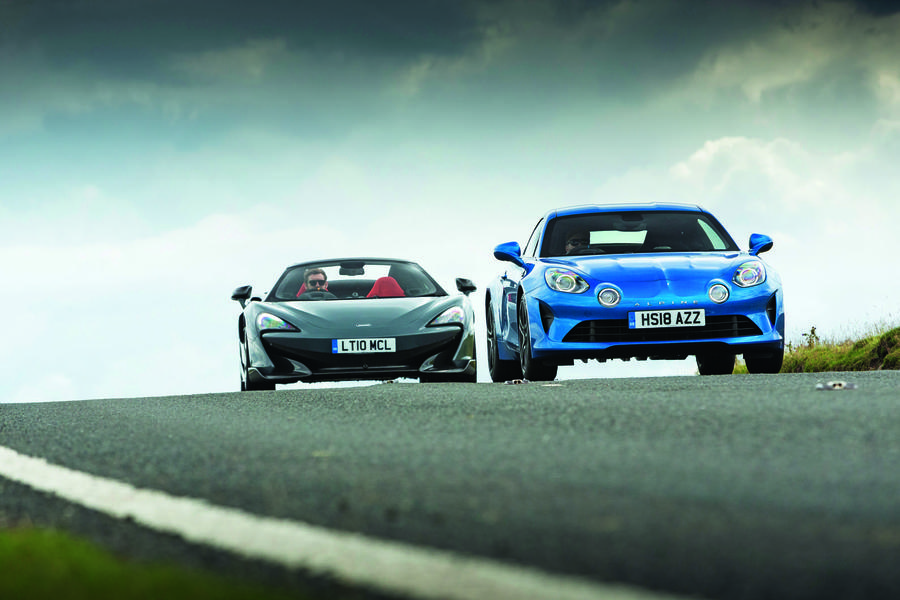
The least surprising should be the Alpine A110. What more can we add to the ocean of purple prose already expended upon this remarkable, game-changing little sports car? Only this: despite it all, despite the fact that it is as familiar to me as an old pair of slippers after having driven plenty and living with one as a daily driver for a few months, surprising it remains.
There is so much about this car that flies in the face of the purist’s handbook – it has only four cylinders, it’s turbocharged, it’s a third down on the requisite pedal count and so on – that if you spend any time away from it and then return, it is with the sense that it simply can’t be as good as your memory suggests. Yes, it’s light and compact, but your brain is trying to kid you there’s an experience here to rival that of driving some of the finest supercars, and that clearly can’t be right; not with the running gear of a Renault Mégane it can’t. Can it?
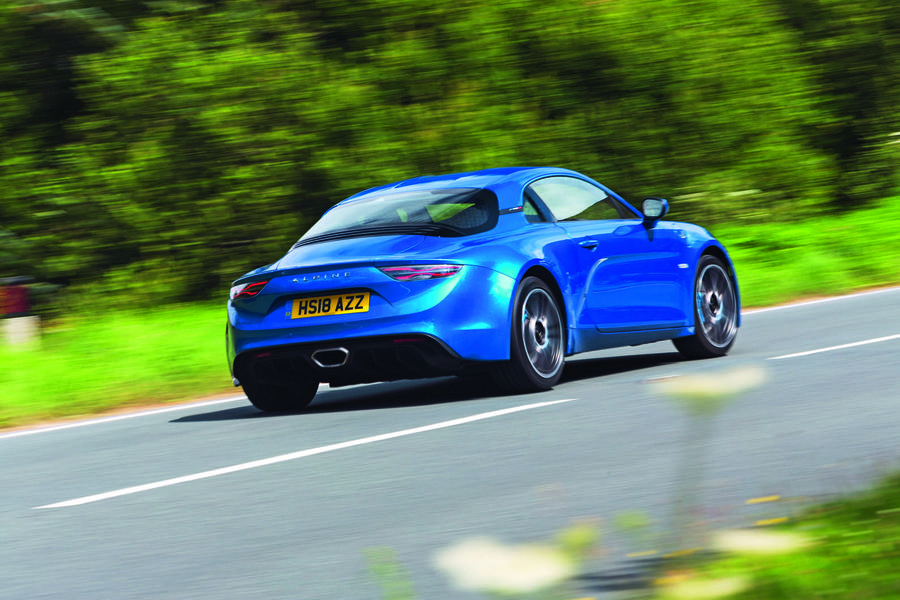
Believe it. The extraordinary thing about returning to an A110 is that it is actually and always even better than your memory recalls. You’ll hear the fizzy rasp of the engine as you open it up for the first time, the always surprising shove in the back to remind you how light this car really is, and then you’ll swoop down into an arcing curve, feel the sublime deftness of that chassis and, if you have blood in your arteries, you will start to giggle. Make no mistake: this car is a landmark.
Which, frankly, the 911 Carrera S is not. Were you to make landmarks of all the 911s that appear to have qualified over the years, you’d end up with the automotive equivalent of the Dubai skyline, unable to identify one peak from the next. Besides, while the Alpine was a bolt from the blue, Porsche’s guiding principle of steady evolution has ensured this new 992 generation of the 911 is the same as the 991 it succeeds. Only better.
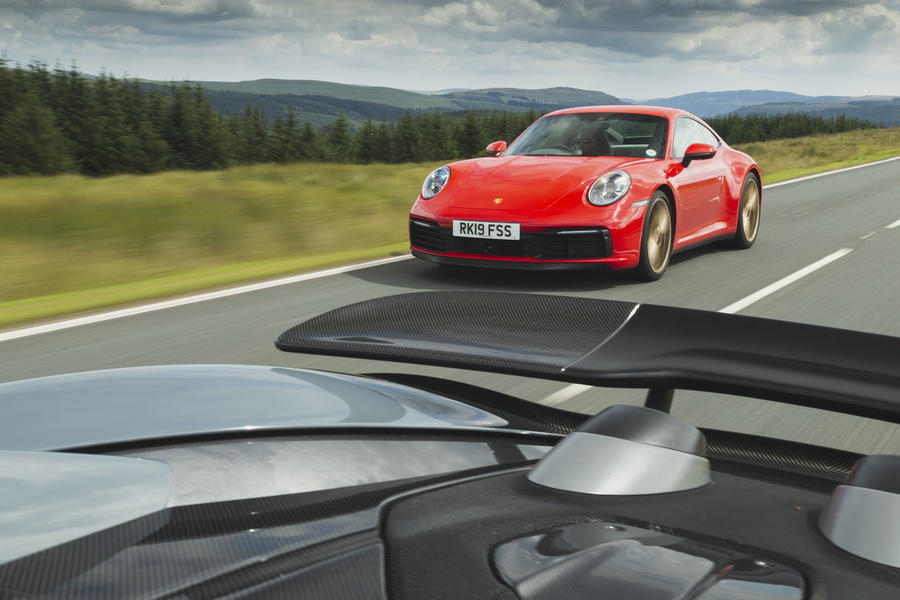
Unlike the Alpine and McLaren, and quite like the Fiesta and 320d, the 911 is a car that invites you to take it for granted. This is not a car for the theatrical raising of the garage doors to reveal the slumbering beast beyond. It’s a car for leaving outside in the rain, covered in road grime, and really not thinking much about most of the time. For being taken for granted is always what 911s have done best, and there’s none better than this. Like a favourite piece of furniture, it moulds itself to you, fits instantly and perfectly into your life. For a while, you can’t think what life was like before it turned up. Then, shortly thereafter, you stop thinking of it at all. Until, that is, someone takes it away and you see the gaping void it has left behind.
The 992 is the most brilliantly realised example of this art to date: a superlative long-distance tourer, capable commuter, awesomely rapid, utterly engaging and always reassuring sports car, all wrapped up in one inimitable shape.
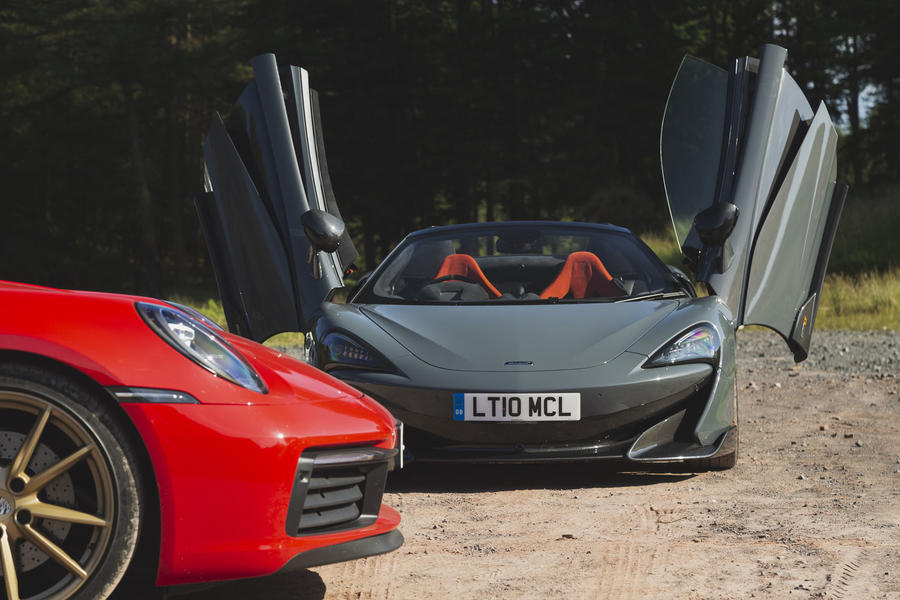
Which brings us to the McLaren 600LT. Driving this car fast on Welsh mountain roads is not just a completely different experience from doing the same in the others, but it’s a completely different discipline, too. You absolutely, positively cannot just let rip. You have to hold back, pick your moments very carefully and exercise saintly restraint the rest of the time. It can be frustrating.
But those moments make up for it. A lot of the time, it actually feels like a quite extraordinarily grown-up A110. For all its ridiculous speed, the LT is never about speed for the sake of it. It is about the sensation of driving, an ultimately immersive automotive experience where the feel of the steering will always count for more than the power of the engine. This is a car for connoisseurs and the fact that it’s most easily enjoyed on a race track and not the environment we’ve chosen for it should not mark it down here. Because even driven quite modestly compared with its capabilities, it is still sublime. Feel is feel and poise is poise whatever the pace.
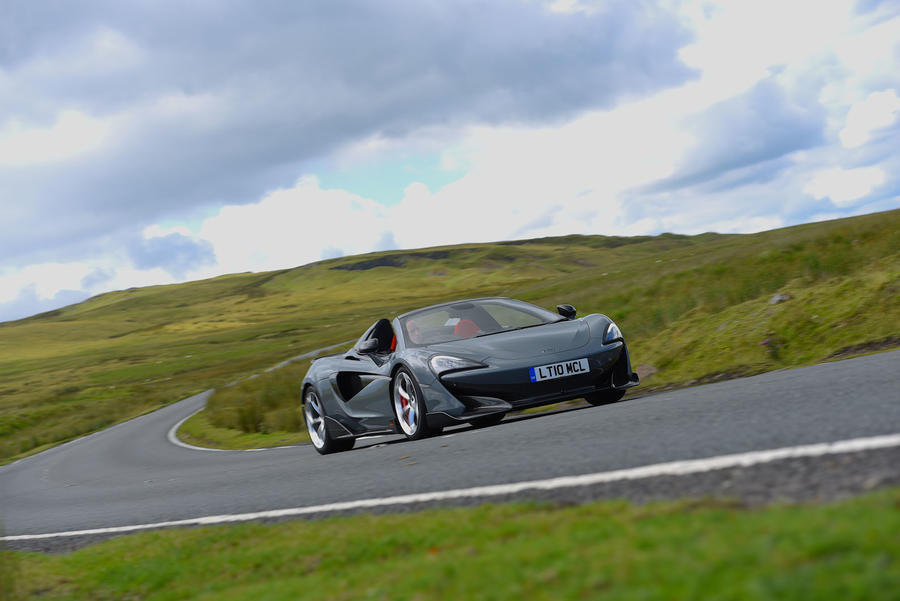
So now you want me to put them in order. It seems redundant to say how tough a process that has been, because it’s what everyone says and, besides, picking the winner was actually dead easy. But ordering the remaining four? Not so much. Frankly, I could argue the case for any one of them in any position from five to two and did so, frequently, before concluding thus.
The BMW comes fifth, which puts it in the top 10% of our 50 favourite cars on sale. It’s so good to see its identity restored: we always used to know what and who the 3 Series was for, and I take great pleasure in being able to do so again.
Next up is the 911, not only a more broadly capable car than the 991 it replaces but a more enjoyable one, too. And I expect this is just the starting point. More than any other, the 911 has subscribed to the less is more approach and I’m itching to drive a standard Carrera with a manual transmission to see if it remains true to that philosophy. If so, it could rank higher still next year.
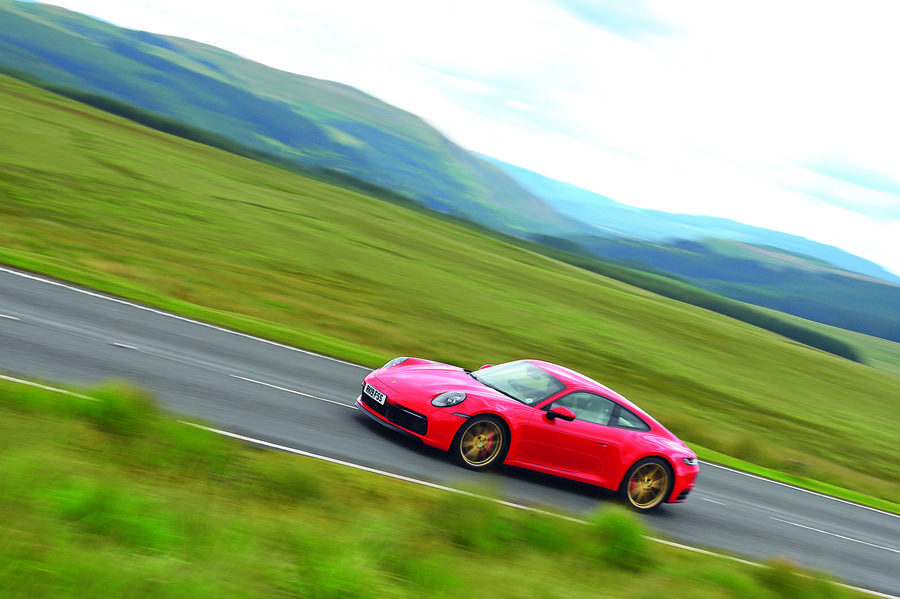
The Fiesta is an outstanding third. Put an affordable hatch on a road in company like this and you’ll soon find out what it’s made of, and the ST simply refused to be cowed. It kept up and it kept us engaged and amused. It did all the things you want a fast Ford to do, and bravo to the Blue Oval for that. It is easily the best car of its kind.
The LT comes second, consolidating its win last year in our quest to find Britain’s best driver’s car. Were money no issue in this contest, it would have won.
But the Alpine’s case at barely a quarter of the LT’s price is impossible to ignore and, agonise over the remaining order as I did, the identity of the winner was never in doubt. Last year, we named the A110 as our favourite car under £50,000 and now it has done it again against every car on sale. Right now, it’s hard to imagine what kind of car is going to be required to beat it.
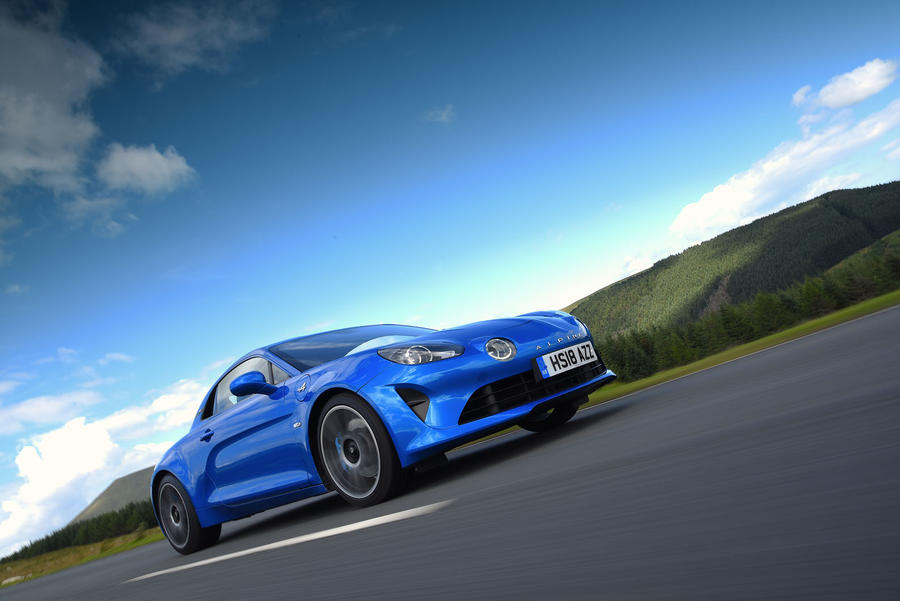
Read more
McLaren Senna vs. Alpine A110: can less be more?
New Porsche 911 vs Audi R8 V10 vs Lotus Evora GT410
Britain’s Best Driver’s Car 2018: Part 1
Source: Autocar
